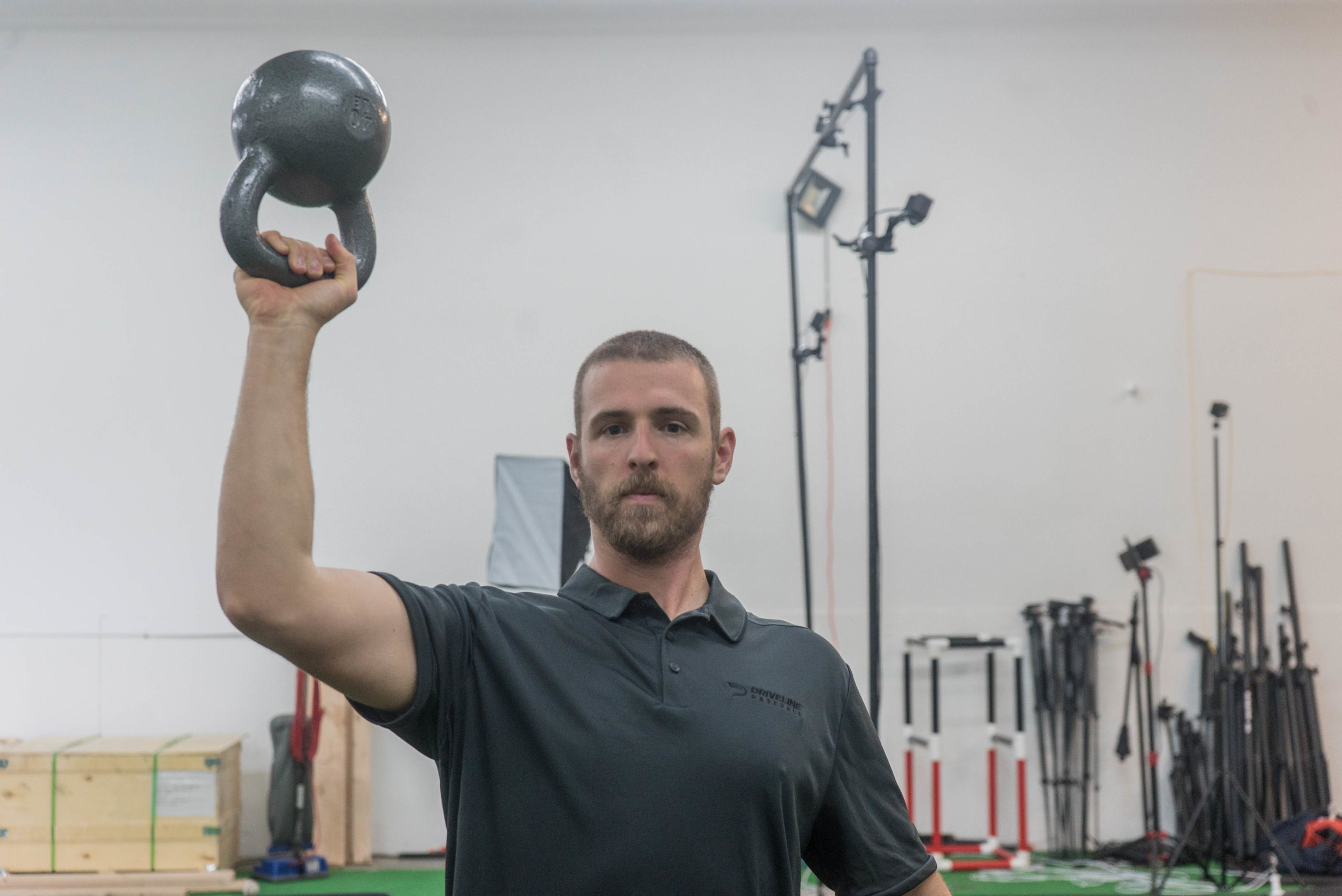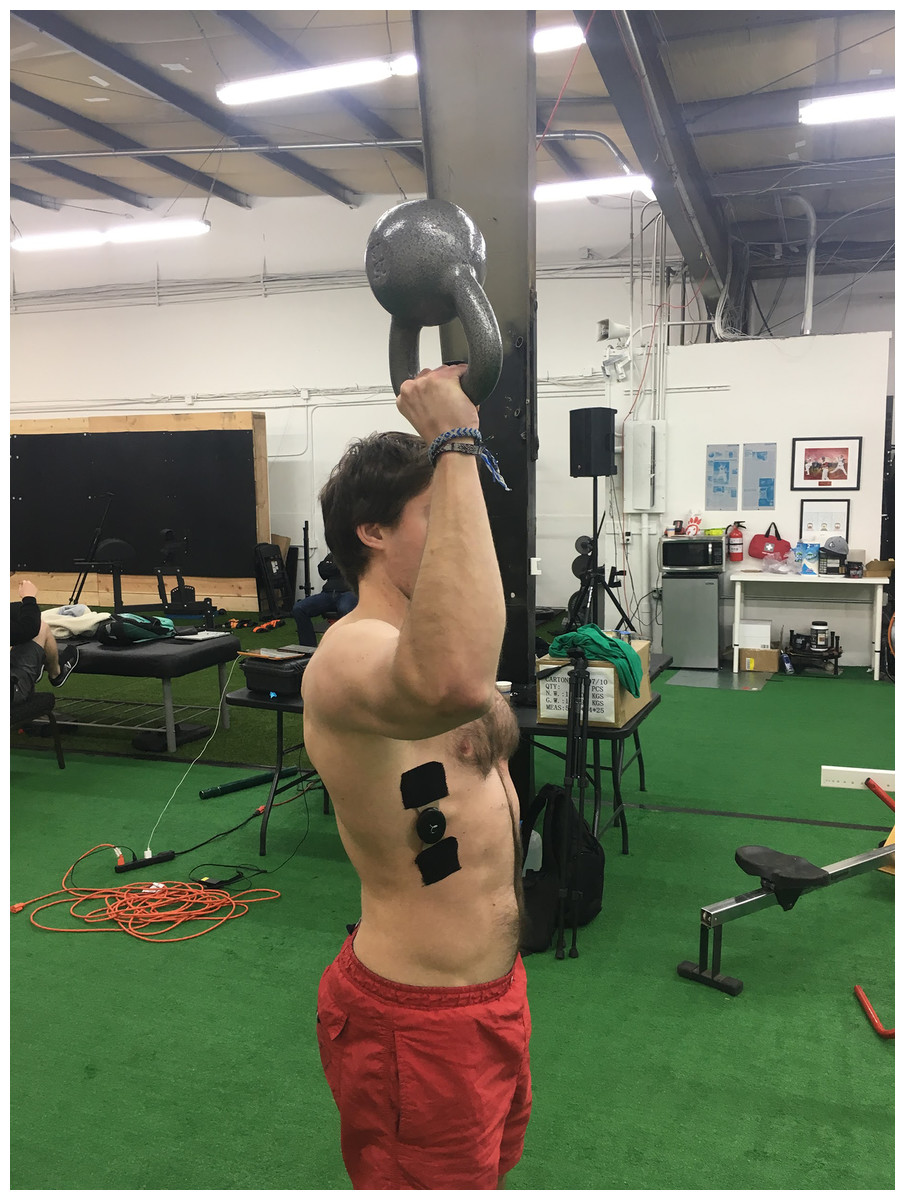A Closer Look at the Kettlebell Carry

Recently we released our first peer-reviewed study at Driveline Baseball, titled “Surface Electromyographic Analysis of Differential Effects in Kettlebell Carries for the Serratus Anterior Muscles.” Now, the title is a little long and perhaps challenging to understand specifically what we studied. So with that in mind, let’s take a little time to explain the thought process behind the study and the impact it has had on how we train our athletes.
The Kettlebell Carry (KBC) is an exercise that has been programmed in gym as part of our recovery routine. It’s also one that has typically been performed in myriad ways depending on where you train. Historically, at Driveline we’ve performed them at 90 degrees of horizontal abduction. We wanted to compare the 90 degree position to a new position, approximately 45 degrees. An EMG sensor was placed on the serratus anterior to measure the difference between the two positions.
The serratus anterior serves as a prime mover for scapular upward rotation and a key muscle in scapular stabilization, two components for reducing injury risk and improving rotator-cuff function. It’s also a finicky piece of musculature that tends to lose function in both athletes with pain and those who are symptom free, but don’t move well. For these reasons, we take time after throwing to take care of this muscle in order to keep it functioning properly.
Prior to our study, we could not find literature on what arm position elicits the greatest amount of serratus activation during the KBC. Therefore, the goal of the study was to determine with minimal coaching which KBC position provided the highest amount of serratus anterior activity.
We used two positions: approximately 45 and 90 degrees of horizontal abduction. Our subjects split into two groups and had surface EMG sensors attached to their serratus anterior muscles. Once ready, we had one group perform a 90-degree KBC, take a short break, and then perform a 45-degree KBC. The other group followed the same procedure but in reverse order.
Our results found that the 45-degree KBC produced a significant increase in EMG activity for the serratus anterior in this position compared to the 90-degree KBC. This suggests there’s a better chance of the 45-degree carry impacting serratus function and strength. As a result, during our recovery work at Driveline, we have shifted from using the 90-degree KBC in favor of 45-degree KBC instead.
Also of note from this study is that technique was not heavily coached. This allowed us to see the levels of activation prior to any major technique intervention from a trainer. However, when we coach our athletes, we look for several things:
- First, we look for posture. We want our athletes to maintain a neutral spine and not compensate by sliding into lateral flexion or lumbar extension to support the weight.
- Second, we look for the lat, bicep, and upper traps to stay quiet during the activity, as this allows for proper scapular upward rotation to occur. If it does, the athlete should feel a muscle turning on under the armpit—that’s the serratus!
- Lastly, we ensure general positioning is in 45-degrees horizontal abduction while the elbow sits at roughly shoulder height throughout the duration of the exercise.
If you are interested in learning more, read the full in-depth look at the KBC study and the science behind it.
Comment section
Add a Comment
You must be logged in to post a comment.

Dylan Sapir -
HTKC still has waiter walks at 90 degrees. I’m guessing we should switch this to 45 now?
Coach -
How long do you carry? Timed or distance?
Driveline Baseball -
A good mark for the Kettlebell carry is 40 yards at a normal walking pace.